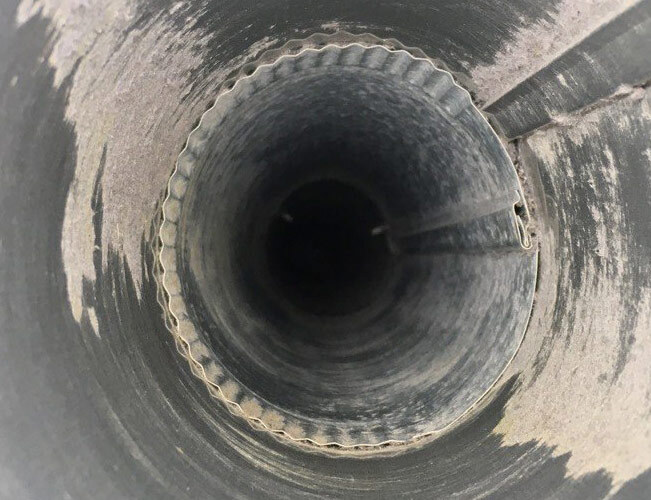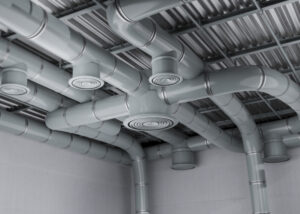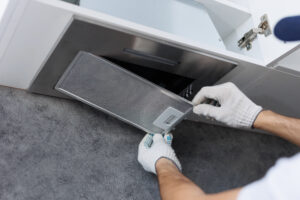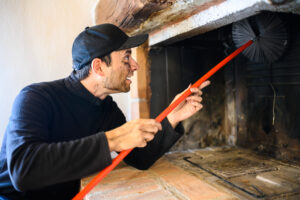Understanding the Dangers of Animal Nests in Dryer Vents
Animal nests in dryer vents pose serious safety risks, including fire hazards, inefficient airflow, and costly appliance damage for Delaware homeowners. Birds, rodents, and insects seek warmth and shelter inside vents, leading to blockages that restrict airflow and cause overheating. Accumulated nesting materials, such as twigs, feathers, and fur, combine with lint buildup, increasing the risk of ignition. Blocked airflow forces dryers to work harder, increasing energy consumption and leading to expensive repairs or premature appliance failure. Homeowners must address these risks to ensure their homes remain safe, efficient, and free from unnecessary fire hazards.
Why Animals Choose Dryer Vents for Nesting
Animal nests in dryer vents result from the warm and protected environment these spaces provide for birds, rodents, and insects. Birds prefer the enclosed spaces of vents to raise their young, unaware of the blockages they create. Small rodents like mice and squirrels seek refuge from predators inside vent openings, causing further obstructions.
Insects such as wasps and bees establish colonies inside vents, worsening airflow restrictions and creating additional hazards. The presence of animals inside dryer vents leads to severe safety issues, requiring proactive measures to prevent infestations and blockages.
Signs That Indicate an Animal Nest Inside Your Dryer Vent
Homeowners should recognize warning signs indicating potential blockages in their dryer vents before serious problems arise. Increased drying times suggest airflow restrictions caused by obstructions preventing proper ventilation. A burning smell from the dryer indicates overheating, often due to lint buildup or foreign materials blocking heat dissipation. Strange noises, such as chirping, scratching, or movement, coming from the vent system may suggest the presence of small animals or debris inside.
Debris, including feathers, twigs, or droppings near the vent opening, can be a sign of past or current obstructions. If the vent flap remains stuck or does not open properly, it may be blocked by an accumulation of materials or an external obstruction. A burning smell while running the dryer is one of the signs of a blocked dryer vent, indicating lint buildup and potential fire hazards.
Fire Hazards Linked to Animal Nests in Dryer Vents
Animal nests in dryer vents present major fire hazards due to restricted airflow, increased lint accumulation, and overheating risks. Dryers release heat and moisture, which, when obstructed, create the perfect conditions for fire ignition inside the vent system. Birds’ nests, consisting of dry materials like twigs, feathers, and leaves, add fuel that accelerates fire spread inside ducts.
Rodents chew through venting materials, exposing electrical wiring, which can cause sparks and lead to dangerous fires. Preventing animal nests inside dryer vents is essential for reducing fire risks and protecting homes from avoidable disasters.One of the leading dryer vent fire hazards is failure to clean the vent regularly, allowing flammable lint to accumulate.
Preventative Measures to Keep Animals Out of Dryer Vents
Preventing blockages in dryer vents requires proactive steps to safeguard home safety, improve efficiency, and lower energy costs. Installing a high-quality vent cover or bird guard effectively blocks birds, rodents, and insects from entering the ventilation system. Conducting regular dryer vent inspections helps homeowners detect and address potential obstructions before they lead to serious airflow restrictions.
Keeping outdoor vent areas free from debris discourages animals from attempting to enter or block the venting system. Sealing cracks and openings around vents prevents rodents from squeezing inside and creating hidden obstructions. Scheduling professional dryer vent cleaning ensures the removal of buildup, reducing potential fire hazards and improving performance. Regular dryer vent cleaning Delaware ensures proper airflow, lowering energy costs and extending the lifespan of your dryer.
How to Safely Remove Animal Nests from Dryer Vents
If homeowners discover blockages in dryer vents, they must take immediate action to prevent further risks and restore proper airflow. Turning off the dryer and unplugging it from the power source ensures safety before attempting any obstruction removal. Using a flashlight, homeowners can visually inspect the vent opening for debris, accumulated materials, or signs of an issue.
Carefully removing visible obstructions with gloved hands helps clear minor blockages without damaging the vent system. If live animals are present, contacting wildlife removal professionals ensures safe and humane extraction without harm. After clearing the vent, thoroughly cleaning it with a vacuum or vent brush restores optimal airflow and reduces future blockage risks.
When to Call Professionals for Dryer Vent Cleaning
While homeowners can remove minor obstructions, professional assistance is necessary for deeply embedded nests inside dryer vents. Professionals utilize high-powered vacuums, rotary brushes, and specialized tools to remove stubborn debris without damaging the vent system. Expert cleaning services guarantee complete lint removal, reducing fire hazards and improving dryer efficiency.
Wildlife removal experts handle live animal extractions safely, ensuring the protection of both homeowners and nesting creatures. Regular professional inspections and cleanings prevent unexpected appliance failures, costly repairs, and dangerous fire risks caused by hidden blockages. Hiring professionals provides peace of mind by keeping dryer vents free from hazardous animal nests.
Conclusion:
The nests in dryer vents present serious fire hazards, reduce efficiency, and cause expensive appliance repairs if left unchecked. Homeowners must take proactive steps to prevent animals from nesting inside dryer vents by installing protective covers, performing routine inspections, and scheduling professional cleanings.
Identifying warning signs such as longer drying times, burning smells, or visible nesting debris helps homeowners detect potential blockages before they escalate. Safely removing animal nests and maintaining clean vents ensures improved dryer performance, lower utility costs, and enhanced home safety. Taking preventative measures protects families, property, and appliances from the dangers of nests in dryer vents.Don’t let animal nests put your home at risk! Contact us now for professional dryer vent cleaning.





